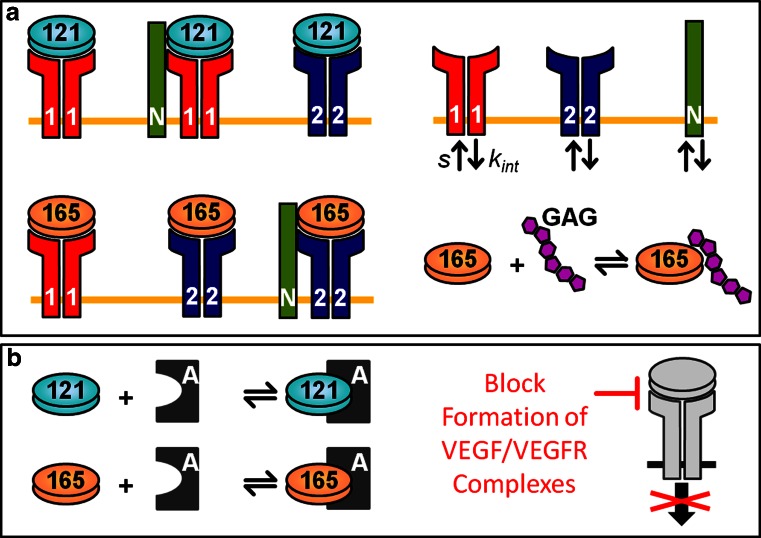Fig. 1.
Schematic of VEGF interactions and neutralization. a The compartment model simulates the molecular interactions of two VEGF isoforms (VEGF121 and VEGF165), receptors (VEGFR1 and VEGFR2), and co-receptors (NRP1 and NRP2). VEGF receptors and co-receptors are expressed on the abluminal and luminal endothelial surfaces, muscle fibers, and tumor cells and are internalized (k int) and inserted into the cell membrane (s). VEGF121 binds to VEGFR1 and VEGFR2 and can form a ternary complex with the coupled VEGFR1–NRP1 complex. VEGF165 binds to VEGFR1 and can form the ternary complex VEGF165–VEGFR2–NRP by binding to VEGFR2 or one of the NRPs. In addition, VEGF165 can be sequestered by GAG chains in the ECM and cellular basement membranes. b VEGF-neutralizing agents bind to the isoforms to block the formation of VEGF/VEGFR complexes and inhibit intracellular angiogenic signaling

